Photographs: Reuters M R Venkatesh
The government is on daily wages.
No. That is not a cynical comment by a political commentator on the Indian government. It is a factual interpretation of the state of affairs about the United States government.
The reason for the same is benumbing as much as baffling -- we are actually facing the once unthinkable prospect of the US defaulting on its debt obligations.
Naturally, this prospect raises fundamental questions. How could the world's sole superpower run the risk of defaulting on its debt obligations?
Is the US government heavily dependent on debt to fund its deficits? Why? And if so, what is its external component?
. . .
What the US debt crisis is all about
Photographs: Reuters
Crucially what happened to the economic theories developed by Nobel laureates -- no less -- and marketed with missionary zeal by various multilateral institutions led by the US Treasury?
Or does the malaise run far deeper that it seems on superficial examination. After all, the current imbroglio in the US is a constitutional issue -- apparently a legal bar limits the US government from contracting further debt (which already stands at a gargantuan $14.29 trillion).
And if the US lawmakers agree to raise the borrowing limit will it be business as usual, till the new limit is reached. At least this is what the world of finance hopes and prays. (Meanwhile, US President Barack Obama said late on Sunday that top lawmakers have reached an agreement to reduce the budgetary deficit and avert a debt default that would have had a 'devastating' effect on American economy.)
Honestly, the issue is not as simple as it seems on first blush. Definitely, it is not a pure legal issue as the political fraternity in the US would like us to believe. Nor is it merely political or ideological as most economists would like us to believe.
. . .
What the US debt crisis is all about
Photographs: Reuters
And definitely it is not simple economics as most believe and would like us to believe. It is legal, political, economics and possibly much more.
Distanced, discredited, disowned
To appreciate what is stated above it is important to visit the root assumptions that govern modern economics in the three-decade period beginning the early eighties.
In fact, this is a subject of great debate amongst macroeconomists in recent times. According to one economist from Harvard, the past 30 years of macroeconomics training at American and British universities were a 'costly waste of time'. Yes, a costly waste of time!
The Economist, in an article titled The State of Economics (July 16, 2009) put the entire issue in proper perspective when it stated that ' . . . the macroeconomic crisis of the past two years is also provoking a crisis of confidence in macroeconomics.'
. . .
What the US debt crisis is all about
Photographs: Reuters
The article goes on to add, 'These internal critics argue that economists missed the origins of the crisis; failed to appreciate its worst symptoms; and cannot now agree about the cure. In other words, economists misread the economy on the way up, misread it on the way down and now mistake the right way out.'
At the core of the present conundrum are certain fundamental theories of macroeconomics -- much of which was debated, celebrated and even imposed on others -- without even considering the possibility that such ideas could be plainly wrong or unworkable in entirely different circumstances, countries or cultures.
Call it confidence or blame it on arrogance. Call it economic fundamentalism, or blame it on some conspiracy. The fact remains that most of the macroeconomic theories of the past three decades ensured cannibalisation of alternative ideas in the discipline of macroeconomics.
In the process any contrary economic ideas were put down ruthlessly all over the world.
. . .
What the US debt crisis is all about
Photographs: Reuters
It all began in the early eighties with the advent of Ronald Regan as the President of the US that spawned a new brand of economics -- Reagonomics -- which placed supply at the centre of economics.
And to effectuate this idea, tax cuts (so that an individual could have more money in his hands) and tariff cuts were carried out (which allowed globally access to goods at competitive rates).
Finally, interest rates were lowered to provide the last mile connectivity.
All this is good economics, except for the fact that this was overdone. And that can be simply explained. We need to produce to keep the wheels of economics moving.
. . .
What the US debt crisis is all about
Photographs: Reuters
Out of the production that is generated we need to consume a portion and leave the balance as savings. Savings are for investment. And investment is for production.
All this was turned on its head during that past 30 years or so by mainstream economists. Consumption was by design turned into a virtue.
In the process, explained through models, economics became extremely complex, complicated and jargonised.
In a remarkable coincidence, Reaganomics coincided with the rise of East Asia. Several East Asian countries had over the eighties and nineties, thanks to their economic policies, became huge suppliers of cheap yet quality goods to the global -- read the US markets.
. . .
What the US debt crisis is all about
Photographs: Reuters
Further, in the aftermath of Asian currency crisis, many Asian countries discovered the virtues of a weak currency and engaged in 'competitive devaluation'.
Under this scenario, many countries simply leveraged their weak currency vis-a-vis the US dollar to gain access to global markets.
While Asian countries continue to export, the US continues to import. Obviously, the current account deficit of the US becomes the current account surplus of other exporting countries, viz. China, Japan, as well as other oil producing and exporting countries.
Naturally, this arrangement -- where some countries continue to export and a few who continuously import and consume -- has created serious imbalances within the global economy.
. . .
What the US debt crisis is all about
Photographs: Reuters
Commenting on this paradigm, Reserve Bank of India Governor D Subbarao stated in a lecture in New Delhi on July 31, 2009: 'Global macro imbalances got built up because of the large savings and current account surpluses in China and much of Asia in the wake of the East Asian crisis a decade ago. These were mirrored by large increases in leveraged consumption and current account deficits in the US.'
'In short, Asia produced and America consumed. There is a raging debate on what was the cause, and what the effect -- the US consumption boom or the Asian savings glut?, he said.
'Regardless, the bottomline is that one was simply the mirror of the other and the two share a symbiotic relationship,' he concluded.
The key words here are 'symbiotic relationship'. It is to be noted that this symbiotic relationship also goes by the sexed-up appellation of globalisation -- a mechanism that translates national imbalances into global imbalances, national problems into global ones.
. . .
What the US debt crisis is all about
Photographs: Reuters
It is therefore a matter of time that the US debt crisis spirals into a global one.
Sensing that this macroeconomic model has run its full course, the Chinese in their approach to the Twelfth Five-Year Plan (which more or less coincide with our Five-Year Plans) have sought to rebalance their economy by increasing domestic consumption and simultaneously placing less reliance on exports.
Crucially, they plan to revalue their Yuan to more realistic levels. In short, they seem to distance themselves from what are the main causes for their spectacular growth over the past three decades.
The curse of excessive savings or consumption
In this scenario, economists have now sought to blame Alan Greenspan, the former Federal Reserve chairman, for the economic crisis.
. . .
What the US debt crisis is all about
Photographs: Reuters
According to many, the 'irrational exuberance' exhibited by the US financial markets during the period leading to the 2008 financial crisis was an outcome of a lax monetary policy and extremely low interest rates.
Greenspan in turn seeks to defend himself. In a paper, titled The Crisis and presented in April 2010, Greenspan states: 'A large segment of the erstwhile Third World nations, especially China, replicated the successful economic export-oriented model of the so-called Asian Tigers: fairly well-educated, low-cost workforces joined with developed-world technology, protected by an increasing rule of law, unleashed explosive economic growth.'
Further, Greenspan says, 'In the developing world, consumption restrained by culture and inadequate consumer finance could not keep up with the surge of income and, as a consequence, the savings rate of the developing world soared from 24% of nominal GDP in 1999 to 34% by 2007, far outstripping its investment rate.'
But the moot point is if the culture in developing countries is the cause of excessive savings, as Greenspan argues, then should not culture be the cause of excessive consumption in the West too? Strangely Greenspan is silent on this issue.
. . .
What the US debt crisis is all about
Photographs: Reuters
This is where the Chinese are facing significant difficulties in rebalancing their economy. Used as they are to excessive savings (due to cultural factors) it is as difficult to make the Chinese spend as much as it is difficult to get an American not to spend!
Now the world of macroeconomists would see for itself that excessive spending is as much a challenge as excessive savings.
Macroeconomists who had marketed economic theories as models and models as gospel are loathe to realise this fundamental truth.
Naturally they stand discredited, even in their own eyes. The US debt crisis is merely an extension of the crisis of modern economics -- a discipline that seems to have lost respect for discipline.
. . .
What the US debt crisis is all about
Photographs: Reuters
Certainly, the US will shortly face the music on account of its excessive debt. So will those countries that saved excessively.
The world is divided even to this day over the role of Greenspan in triggering the economic crisis of 2008.
Nevertheless, he needs to be congratulated, atleast for one issue: he has linked economics to culture for the first time in 30 years.
Will it trigger a rewriting of economics all over once again?
The author is a Chennai-based chartered accountant. He can be contacted at mrv@mrv.net.in


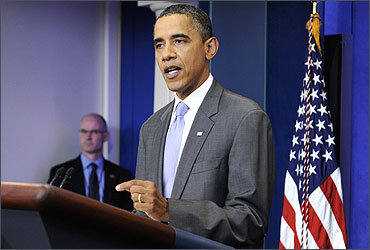

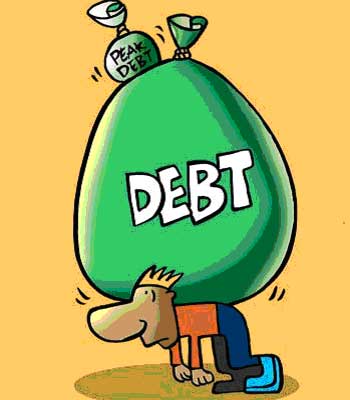

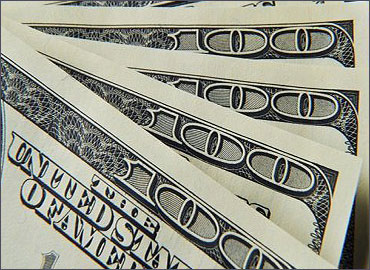
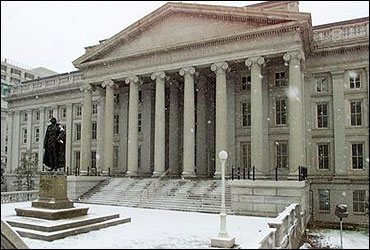


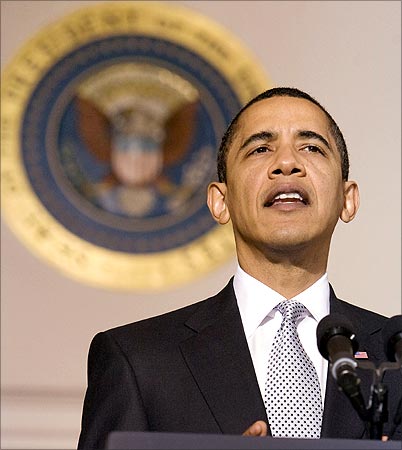


article